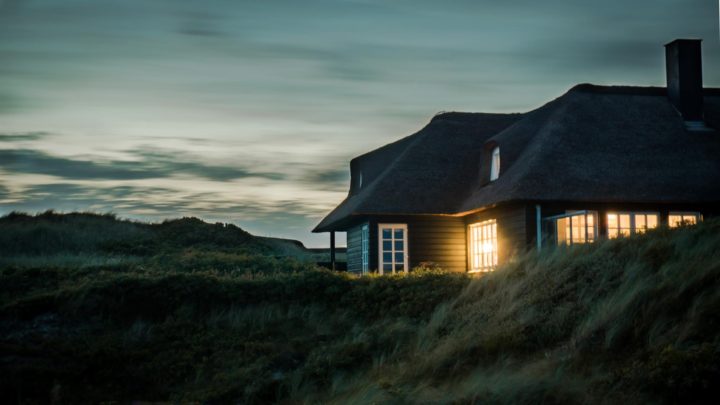The following contribution is from another author.
Creating a warm and relaxing home for the family is about more than choosing a nice shade of blue paint for the walls or getting the right couches for your living room. Obviously, those small details are important, but you have to think about the bigger picture. You have to think about how your household looks and feels on the whole. That’s when you’ll start to create a home which not only works on an aesthetic level but a functional level, too. If you want to feel comfortable in your humble abode, then you need to think about practicality, as well as design. So, the following pieces of advice should help you to renovate your home in a modern, yet practical, manner.
Make your rooms as spacious as possible.
Start with a simple renovation project. Tidying up your home can have a bigger effect on its overall appearance than you might appreciate. You might find that a lot of the design problems with your house are the result of clutter. A lack of space could be the core issue that you need to fix. So, start decluttering each of your rooms. You could even sell your old belongings on sites such as eBay and Gumtree to raise some money for other renovation projects that you have in mind.
Once you’ve started to get rid of the junk that’s taking up space in your home, you’ll probably find that each room starts to feel larger. This could help you to start achieving a minimalistic aesthetic in your house; it’s not just a practical way to stop hoarding. If you want to renovate your humble abode in a modern, yet practical, manner, then making your rooms as spacious as possible is an essential starting point. You’ll feel much more comfortable in your own home. It’s not just about improving the aesthetic of your household.
Learn about transitional design.
You might also want to learn about transitional design if you want to create a home that is both modern and practical. Transitional design involves a combination of traditional and contemporary styles. The goal is to create a household that uses some elements of classic household design, whilst still looking modern. That way, you can create a stylish and relevant look for your house without creating a home which lacks any sort of character.
For example, you could use the advice in the previous point to create a minimalistic abode. You could also use white paint to create a neutral background throughout each room. Then, you might want to use some vintage furnishings, such as classic wooden dining tables or cabinets to give your home a warm and welcoming feel. Transitional design works when you get the balance right. You need your house to look modern without losing the classic style that gives it some substance.
Add a statement piece to every room.
A great way to renovate your home is to add a statement piece to every room. The goal is to avoid being excessive. As mentioned earlier in this article, minimalism can do a lot for your household. So, instead of seeing modernity as the road to excessive extravagance, see it as the road to minor extravagance. Your home doesn’t need to be overly bougie. Perhaps you could get stylish light fixtures for your rooms. This would create a consistent design throughout your household, but it’d also add some intriguing focal points to each of your rooms.
You might also want to add a statement piece to your garden. After all, your home’s exterior design is just as important as its interior design. A stylish gazebo, for example, could serve as a stylish, yet functional, addition to your home’s outdoor area. Statement pieces can be practical, too. You could even make your entire patio area look like an impressive statement piece. So, if you want to renovate your home in a modern, yet practical, manner, then focus on statement pieces. Continuing on the topic of your property’s exterior, the following point should help you with your renovation project.
Fix up your property’s exterior.
It’s worth focusing on more than just the design of your home if you want to improve its outer image. You need to focus on practical fixes which need to be made, too. For example, you could plant some fresh flowers to both give your garden a brighter aesthetic and improve the natural quality of your outdoor area. Cutting weeds and mowing the lawn will keep your garden in good shape, as well. With regards to your actual house, you might want to repaint your front door to both spruce it up and give it a fresh layer of protection against the elements. This will protect your door in a practical sense. You might also want to check out this roofing company. They could fix up the roof of your home and keep your property’s interior much warmer.
Use timeless styles.
Timelessness is another important aspect of any well-designed property. If you want to give your home a modern design, then you should try to avoid the latest trends. That might sound counter-productive, but you don’t need to pay attention to fleeting styles to make your household look good. That’s an impractical way to design your home, anyway; you’ll just have to spend more time and money on renovation projects in the near future to update your home’s design once the latest trends become unfashionable. So, timeless styles should be your focus.
You might want to use natural design pieces throughout your house. Nature doesn’t go out of fashion. Wood has been used in homes for centuries, to give an example. Perhaps you could replace your old and faded carpets with wooden flooring. Not only would that look much more stylish, but it’d be a way to renovate your home timelessly. Plus, you could still maintain your household’s cozy vibe by getting some rugs for your floors, instead of carpets. A well-designed rug can serve as a great statement piece. Using timeless styles really ties into the earlier point about transitional design. If you want to merge the traditional and contemporary sides of your home together, then use styles which aren’t connected to bygone eras of household design.
















